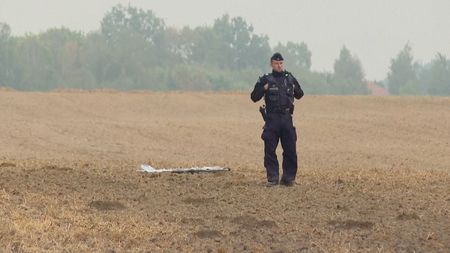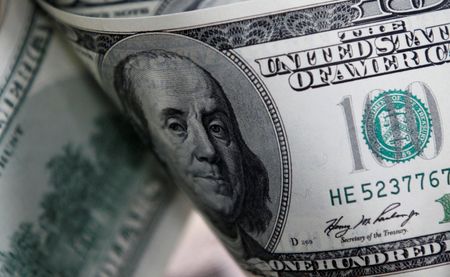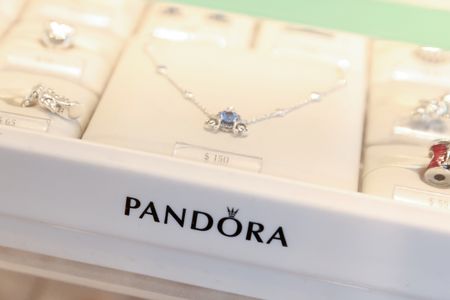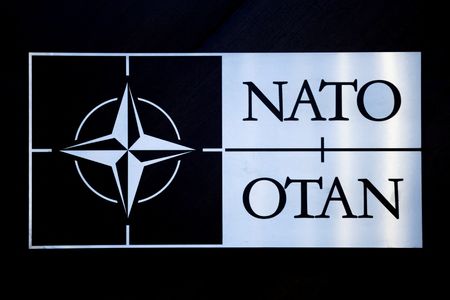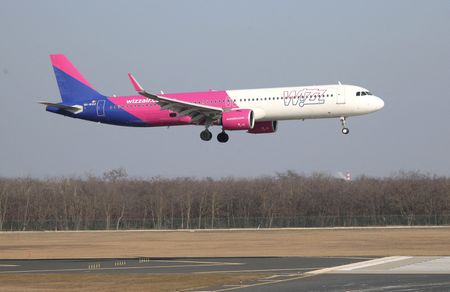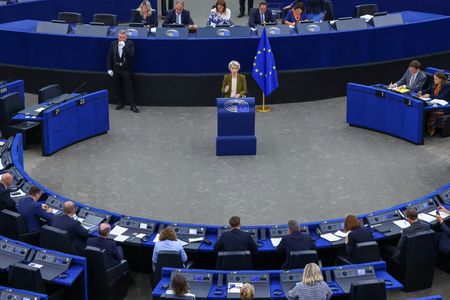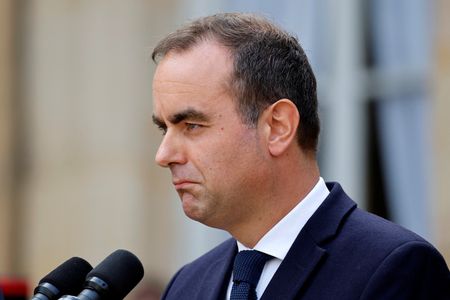By Alan Charlish and Lidia Kelly
WARSAW (Reuters) – Poland shot down drones in its airspace on Wednesday with the backing of military aircraft from its NATO allies, the first time a member of the Western military alliance is known to have fired shots during Russia’s war in Ukraine.
Polish Prime Minister Donald Tusk told parliament it was “the closest we have been to open conflict since World War Two”, although he also said he had “no reason to believe we’re on the brink of war”.
Moscow denied responsibility for the incident, with a senior diplomat in Poland saying the drones had come from the direction of Ukraine.
European leaders, who have lately been trying to persuade U.S. President Donald Trump to join them in tightening sanctions on Russia and boosting support for Kyiv, said it justified a collective response. There was no immediate response from Washington.
Poland said 19 objects had entered its airspace during a large Russian air attack on Ukraine, and that it had shot down those that posed a threat. Tusk called the incident a “large-scale provocation” and said he had activated Article Four of NATO’s treaty, under which alliance members can demand consultations with their allies.
A NATO spokesperson said NATO chief Mark Rutte was in touch with Polish leadership and the alliance was consulting closely with Poland.
A source said NATO was not treating the incident as an attack but as an intentional incursion. Polish F-16 fighter jets, Dutch F-35s, Italian AWACS surveillance planes and mid-air refueling aircraft jointly operated by NATO were involved in the overnight operation, according to the source.
Andrey Ordash, Russia’s charge d’affaires in Poland, was cited by RIA state news agency as calling accusations of an incursion “groundless” and said Poland had not given any evidence that the drones shot down were of Russian origin.
The Kremlin declined comment to comment directly on the downing of the drones but spokesperson Dmitry Peskov said:
“The leadership of the EU and NATO accuse Russia of provocations on a daily basis. Most of the time, without even trying to present at least some kind of argument.”
During the incident, the Operational Command of the Polish Armed Forces urged residents to stay at home, with three eastern regions at particular risk.
Several Polish airports were temporarily closed, including one that has been used as the main access point for Western officials and supplies travelling to Ukraine over land.
NATO’s Rutte said that a full assessment of the incident had not yet been made but added that, “whether it was intentionally or not, it is absolutely reckless, it is absolutely dangerous.”
Countries bordering Ukraine have reported occasional Russian missiles or drones entering their airspace in the past during the war, but not on such a large scale, and they are not known to have shot them down. Two people were killed in Poland in 2022 by a Ukrainian air defence missile that went astray.
Reuters footage showed a blackened spot in a brown field in southeastern Poland where drones fell.
Since NATO’s creation in 1949, Article 4 has been invoked seven times, most recently in Feb. 2022 following Russia’s invasion of Ukraine.
‘INTENTIONAL’
“Russia’s war is escalating, not ending. We must raise the cost on Moscow, strengthen support for Ukraine, and invest in Europe’s defence,” the EU’s top diplomat Kaja Kallas said.
Early indications suggested the entry of Russian drones into European airspace was intentional, not accidental, she added in her post on X.
Ukrainian President Volodymyr Zelenskiy said Russia used 415 drones and 40 missiles in attacks on Ukraine overnight, adding that at least eight Iranian-made shahed drones had been aimed towards Poland.
“An extremely dangerous precedent for Europe,” he said. “A strong response is needed – and it can only be a joint response by all partners: Ukraine, Poland, all Europeans, the United States.”
Russia has long said it has no intention of stoking a war with NATO and that Western European countries suggesting it is a threat were trying to worsen relations.
European Commission President Ursula von der Leyen called for more sanctions on Russia, and said the EU was preparing sanctions on ‘shadow fleet’ tankers that transport its oil and third countries that buy it.
Trump, who warmly welcomed Putin in Alaska at a summit in August, said over the weekend he was ready to move to a second phase of sanctioning Russia after months of talks about a peace deal.
It was his strongest indication yet that he may escalate pressure on Moscow or its oil buyers in response to Russia’s war in Ukraine.
The European Union’s top sanctions official has been in Washington this week to discuss coordinated sanctions. If adopted, it would be the first time the United States and Europe had taken coordinated steps against Russia since Trump returned to office in January promising to end the war in 24 hours.
(Reporting by Lidia Kelly, David Shepardson, Steve Gorman, Andrea Shalal, Alan Charlish, Marek Strzelecki, Pawel Florkiewicz, Sabine Siebold, Andrew Gray; Writing by Lidia Kelly and Matthias Williams; Editing by Peter Graff and Jon Boyle)

